Parking brake system drive – mechanical, cable, to the rear wheels
It consists of a lever (with a handle and a locking mechanism), an intermediate lever and its rod, an equalizer and its rod, cables, a drive lever with a rod in the rear brake mechanisms.
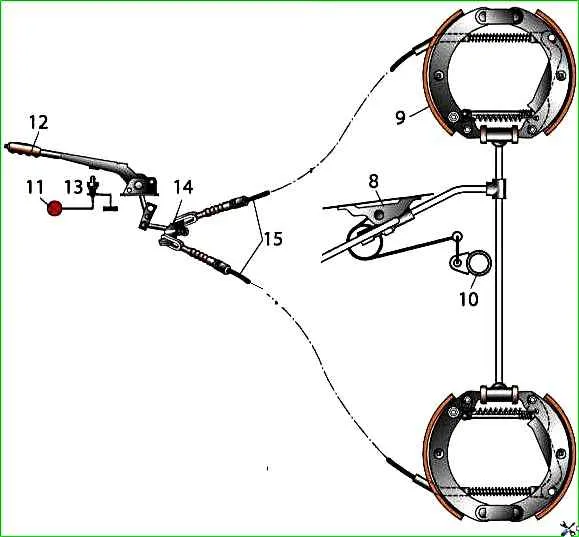
The free play of the drive lever is adjusted by an eccentric on the rear block, and the tension of the cables is adjusted by an adjusting nut on the equalizer rod.
Adjusting the parking brake
Check the position of the parking brake lever, which should be in the lowest position.

Unscrew lock nut 1 and adjusting nut 2 and disconnect both parking brake cables from equalizer 3.
Remove the brake drums of the rear wheels.
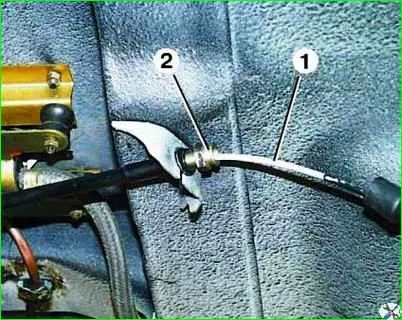
Check the free play of the actuator lever on each rear brake.
To do this, move the dirt cover and with a little force (the brake pads should not move) pull cable 1 towards the front of the car.
The movement of cable 1 relative to the end of the tip 2 of the shell should be within 6–9 mm.
If the amount of movement differs from the specified value, it is necessary to adjust the free play of the drive lever.
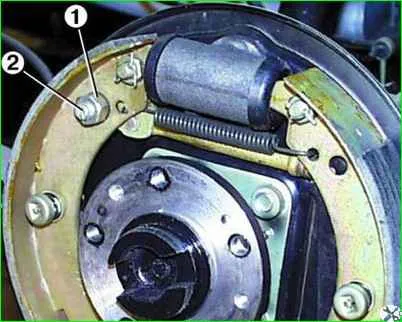
To adjust the free play of the drive lever, loosen nut 1 of the parking brake adjusting eccentric and, using a screwdriver, turn eccentric 2 by the slot to achieve the required result.
After adjustment, tighten nut 1, holding the eccentric from turning, and install the brake drum and wheels.
Push the dirt covers into place.
Move the parking brake lever up one click.
Connect the cables to the equalizer. Tighten the adjusting nut until the rear wheels can still be rotated freely by hand (allowing the friction linings of the pads to slightly touch the working surfaces of the brake drums). Tighten the locknut.
Set the parking brake lever to its lowest position.
If the parking brake is correctly adjusted, the brake drums should not heat up while the vehicle is moving without braking.
Removing and installing the parking brake cable
Check the installation of the parking brake lever, which should be in the lowest position.
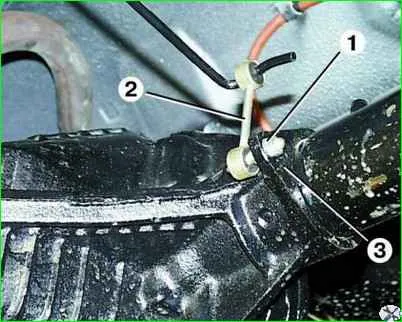
Unscrew locknut 1 and adjusting nut 2 and disconnect the parking brake cable from equalizer 3.
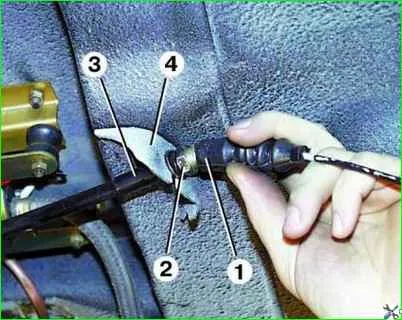
Move the dirt cover 1, unscrew the nut 2 securing the cable sheath 3 to the body bracket 4 and disconnect the cable sheath from the bracket.
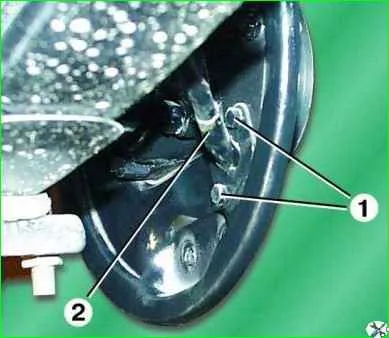
Remove the rear wheel brake drum.
Disconnect the upper brake pad mountings.
Unscrew the two bolts 1 of the fastening and disconnect the cable sheath 2 from the brake shield.
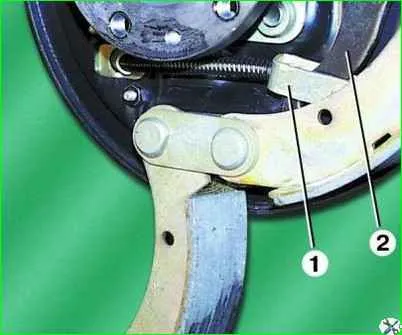
Disconnect end 1 of cable sheath from drive lever 2
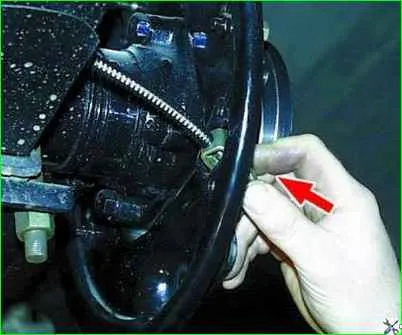
Remove the parking brake cable by passing its end through the hole in the brake shield
Install the parking brake cable in the reverse order of removal. The parking brake must be adjusted during installation.





